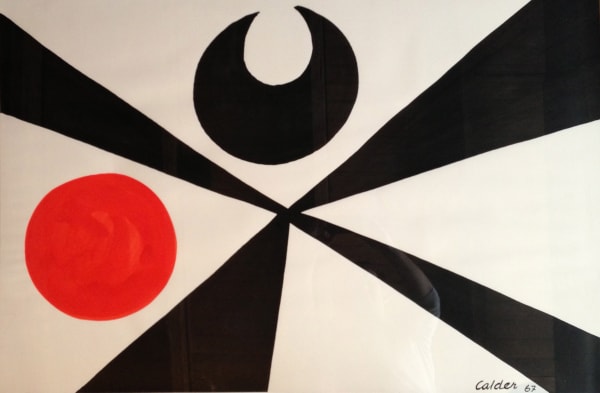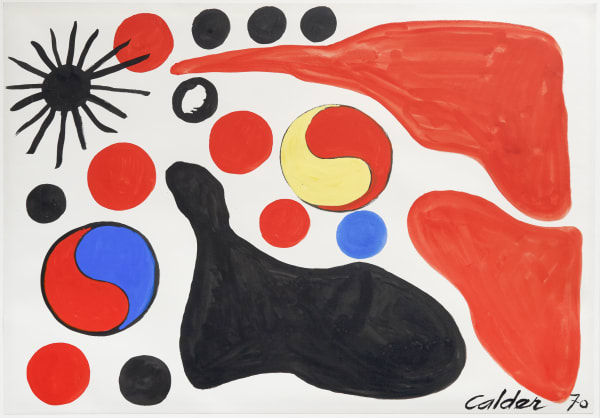Alexander Calder 1898-1976
Please contact the gallery for other works available by this artist.
Alexander Calder was introduced to art as a young child in Pennsylvania. His mother was a professional portrait artist, and his father was a sculptor known for his colossal statue of William Penn on top of Philadelphia's City Hall Tower. Despite such a heavy artistic influence, Calder studied mechanical engineering at the Stevens Institute of Technology in 1915. After he received his degree, he worked on a ship as a hydraulic engineer, yet the beauty of his voyages inspired him to return to his family roots as an artist.
Calder started his art education at the Art Students League in New York along side Thomas Hart Benton, John Sloan and George Luks. He later expanded his studies by moving to Paris in 1926, where he met avant-garde artists as Joan Miró and Marchel Duchamp. He was heavily influenced by Joan Miró and Piet Mondrian, and he even stated once that he wished Mondrian's paintings could be in motion.
Calder incorporated the surrealist's biomorphic shapes, bold color and sense of balance into his three-dimensional works. He is best known for his mobiles, which are kinetic, balanced, and suspended compositions, and his stabiles, which are motionless wire sculptures. Calder was given several retrospectives during his lifetime, and in 1976 he was honored with the Presidential Medal of Freedom and the Bicentennial Artist Award from the Whitney Museum of American Art. Though Calder passed away later that same year, his legacy lives on and his highest auction price was reached in 2014 when Christie's sold his Poisson Volant (Flying Fish) (1957) for $23 million.
Alexander Calder has work featured in the permanent collections of the Whitney Museum of American Art, the MoMA, the Centre Georges Pompidou in Paris, the Museo Nacional Centro de Arte Reina Sofía in Madrid, the National Gallery of Art, in Washington in D.C. and The Philadelphia Museum of Art.
Related Categories: Kinetic Sculpture, American Sculpture 1830-1950, Open Form Sculpture, Biomorphic, Abstract Sculpture, Interactive, Circus/Carnival, Line, Form and Color, Sculpture, Outdoor Art.




